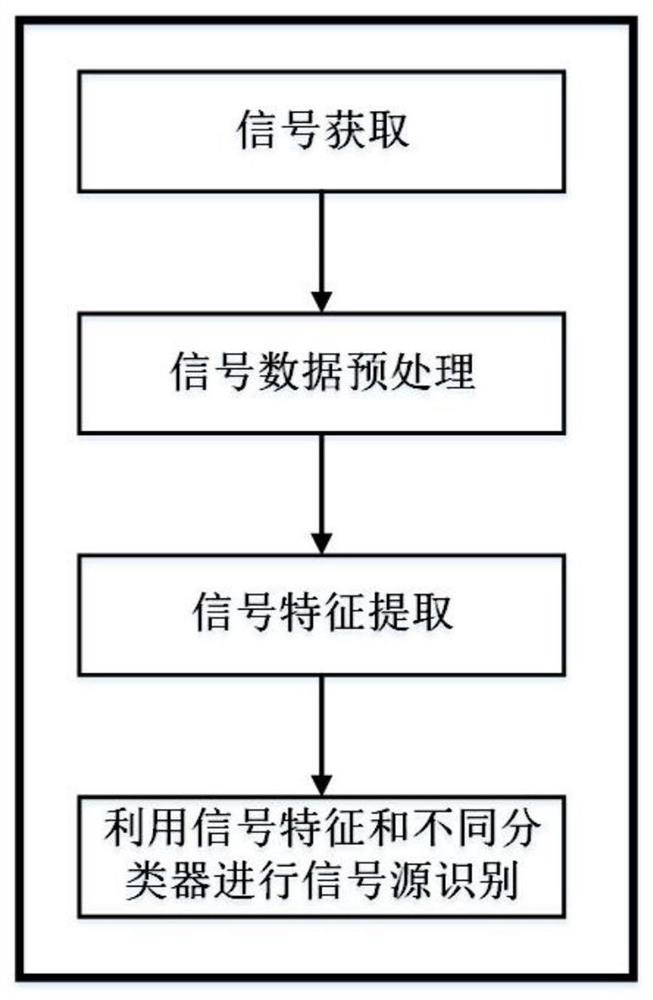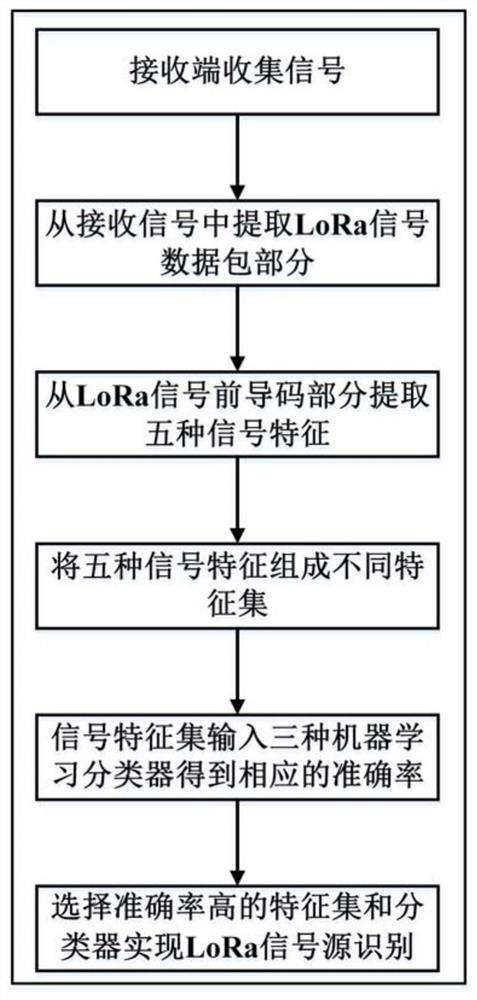A lora signal source identification method
A signal source and signal technology, which is applied in the field of LoRa signal source identification system, can solve the problem of source identification of different devices that cannot use LoRa signals, and achieve the effect of ensuring recognition accuracy, small amount of calculation, and high-efficiency recognition
- Summary
- Abstract
- Description
- Claims
- Application Information
AI Technical Summary
Problems solved by technology
Method used
Image
Examples
Embodiment 1
[0041] This embodiment provides a feature set and classifier selection method for LoRa signal source identification. It is known that the LoRa signal source sends out the LoRa signal sequence, and the receiving end receives the training signal sequence S' A , including the following steps:
[0042] Step 1, the training signal sequence S' received by the receiving end A and the simulated signal sequence S 1 Perform a cross-correlation operation to obtain a training correlation sequence; extract multiple positions with high correlation values in the training correlation sequence, and use the extracted positions as multiple training starting positions, that is, obtain the training starting position vector POS′ A =[pos' 1 A , pos' 2 A ,...,pos′ k A ], where k is the number of training starting positions, and k is a natural number greater than or equal to 1; the signal sequence S obtained by simulation 1 It has the same bandwidth and spreading factor as the LoRa signal so...
Embodiment 2
[0054] This embodiment provides a LoRa signal source identification method, which is used to identify the signal sequence S received by the receiving end among multiple LoRa signal sources. A The corresponding LoRa signal source;
[0055] In this embodiment, the existing commercial LoRa node is used as the transmitting end, and the USRP is used as the receiving end for signal collection and analysis;
[0056] Include the following steps:
[0057] Step 1, the signal sequence S received by the receiving end A And the signal sequence S simulated according to the signal characteristics of the LoRa signal source 1 Perform a cross-correlation operation to obtain a correlation sequence; extract multiple positions with high correlation values in the correlation sequence, and use the extracted positions as multiple starting positions to obtain a starting position vector Where k is the number of starting positions, and k is a natural number greater than or equal to 1;
[0058] Th...
PUM
 Login to View More
Login to View More Abstract
Description
Claims
Application Information
 Login to View More
Login to View More - R&D
- Intellectual Property
- Life Sciences
- Materials
- Tech Scout
- Unparalleled Data Quality
- Higher Quality Content
- 60% Fewer Hallucinations
Browse by: Latest US Patents, China's latest patents, Technical Efficacy Thesaurus, Application Domain, Technology Topic, Popular Technical Reports.
© 2025 PatSnap. All rights reserved.Legal|Privacy policy|Modern Slavery Act Transparency Statement|Sitemap|About US| Contact US: help@patsnap.com



